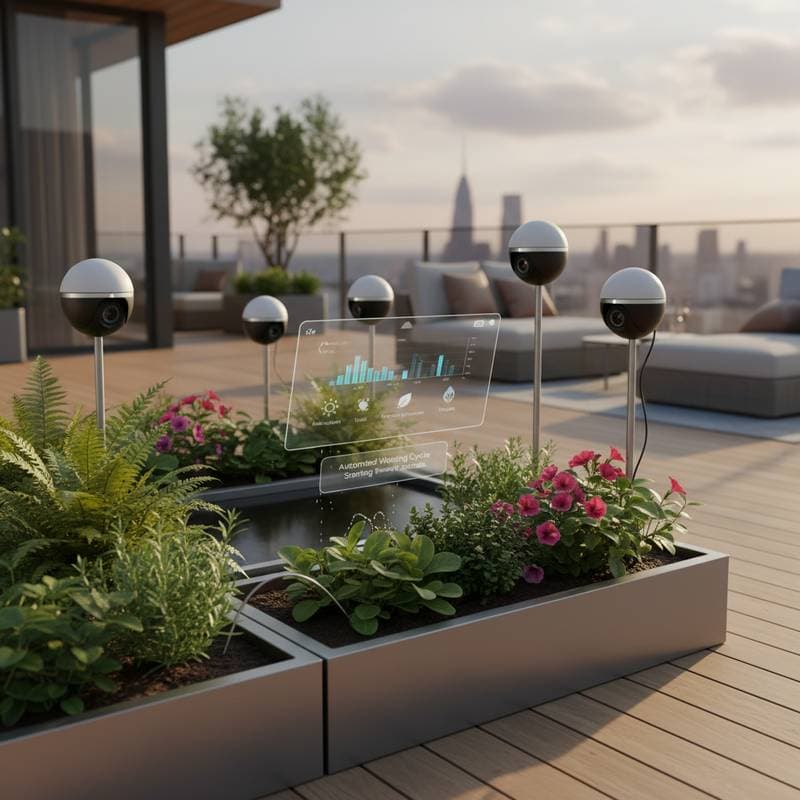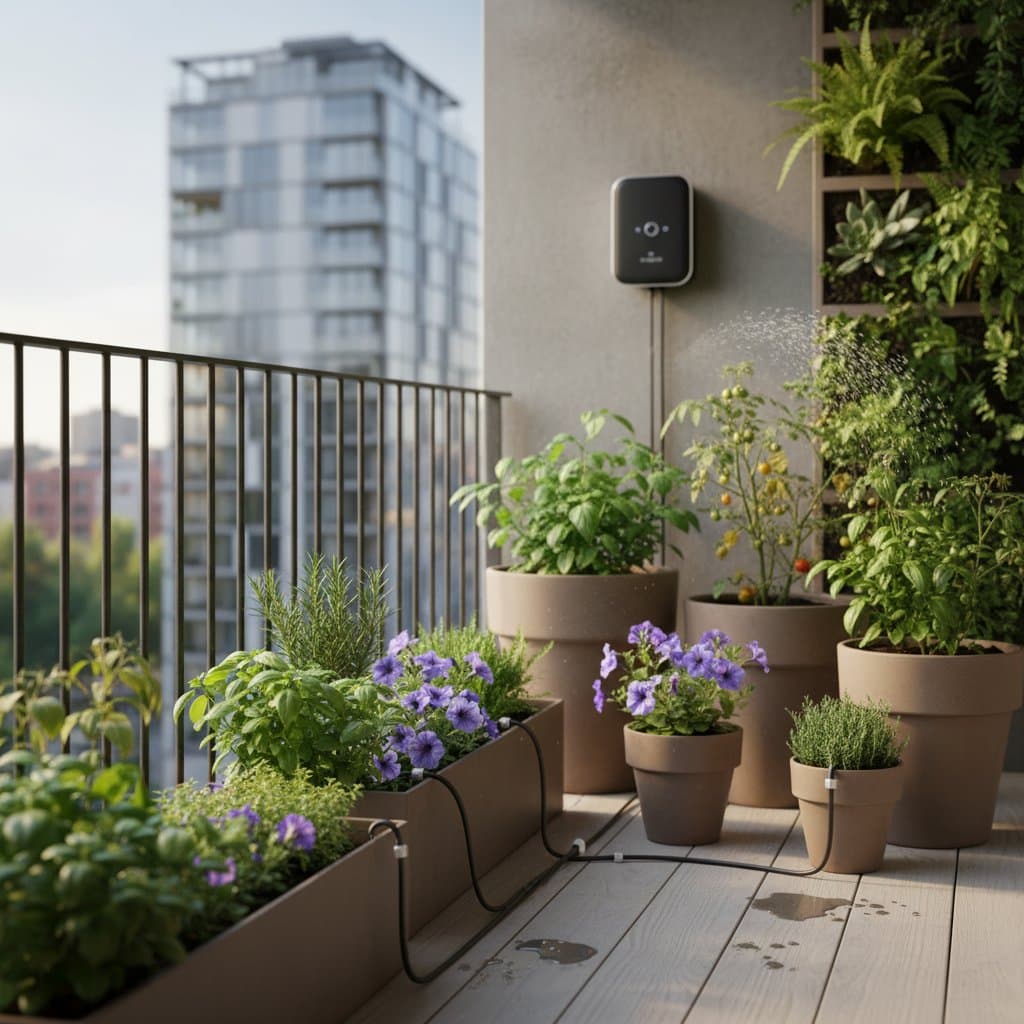Introduction to Pollinator Pockets
Urban living often means limited green space, but your deck can become a vital habitat for pollinators like bees and butterflies. Pollinator pockets are compact, container-based gardens designed to attract and support these essential insects using native plants and simple nesting structures. These setups not only boost local biodiversity but also add color and life to concrete surroundings.
By focusing on native species, you provide food and shelter that align with local ecosystems, helping pollinators thrive amid city challenges such as pollution and habitat loss. This approach requires minimal space—think a few pots or a small raised bed—and delivers immediate environmental impact. Start small to see your deck buzzing with activity.
Benefits of a Deck-Based Pollinator Haven
Supporting pollinators contributes to healthier urban environments. Bees and butterflies pollinate plants that produce one-third of our food, so even a tiny pocket aids food security. In cities, these insects face declining populations due to lost habitats, making your deck a crucial refuge.
Beyond ecology, pollinator pockets enhance your outdoor experience. Native flowers offer prolonged blooms, low water needs, and resistance to urban stresses like heat and wind. You gain a low-maintenance feature that requires less effort than traditional gardening while providing aesthetic and therapeutic value.
Selecting Materials and Plants
Choose durable, lightweight containers to suit deck constraints. Options include terracotta pots, recycled wooden crates, or fabric grow bags, each holding 5 to 10 gallons for root depth. Ensure pots have drainage holes to prevent waterlogging, which can harm plants and attract pests.
Opt for native plants suited to your region and deck conditions, such as full sun or partial shade. Recommended species include bee balm for its nectar-rich red blooms, black-eyed Susan for sunny yellow flowers, and milkweed for butterfly caterpillars. Select a mix of perennials and annuals: three to five plants per pocket, spaced 12 inches apart, to create layered blooms from spring to fall.
Incorporate a bee block or hollow stems for nesting. Bee blocks are wooden pieces drilled with varying hole sizes to mimic natural cavities. Source them from garden suppliers or craft your own using untreated lumber. Add mulch like shredded bark to retain moisture and suppress weeds.
Step-by-Step Setup Guide
Step 1: Prepare Your Deck Space
Assess your deck for sunlight, typically 6 hours daily for most natives, and wind exposure. Clear a 4-by-4-foot area or cluster pots in a corner. Check weight limits; a standard deck supports 50 pounds per square foot, so distribute containers evenly.
Gather tools: trowel, gloves, watering can, and measuring tape. For safety, store tools in a labeled bin with child-safe latches to keep them organized and secure.
Step 2: Fill and Plant Containers
Line pots with landscape fabric if needed to improve drainage. Fill with a mix of potting soil amended with compost for nutrients—aim for well-draining, organic matter-rich formula. Plant in spring or fall: dig holes twice the root ball width, place plants at soil level, and firm gently.
Position taller plants like coneflowers at the back, shorter ones like asters in front. Water deeply after planting to settle soil, then apply 2 inches of mulch around bases.
Step 3: Add Nesting Features
Install the bee block securely, perhaps mounted on a railing or set in a pot. Place it near flowers but sheltered from direct rain. Include bundles of hollow stems, such as elderberry or sumac, tied with twine and inserted into pots.
Avoid pesticides entirely; these habitats rely on natural balance. Introduce diversity by adding a shallow water dish with pebbles for drinking stations.
Seasonal Maintenance Practices
Pollinator pockets require minimal upkeep once rooted, typically a few minutes weekly to sustain health.
Water plants with about one inch per week, increasing during heat waves to keep soil moist but not soggy. Deadhead faded flowers by snipping just below the bloom to promote continuous flowering and prevent seed spread.
Pull weeds promptly to preserve space for natives; most emerge early and pull easily by hand. Inspect nesting blocks annually, replacing if holes fill with debris or show damage.
In winter, retain dry stems and foliage until spring cleanup. Many solitary bees hibernate within, emerging as temperatures rise. Mulch lightly to insulate roots against freezes.
Cost Breakdown and Time Investment
A basic pollinator pocket costs $60 to $120, scalable with your choices.
- Containers: $10 to $20 each for two to three units
- Soil and mulch: $15 total for amendments
- Native plants: $5 to $8 per plant, buying four to six
- Bee block: $10 to $15
Setup takes 3 to 4 hours, including shopping and planting. Ongoing care demands 10 minutes weekly. Reuse existing pots or soil to halve expenses. Renters benefit from portable options like plastic or fabric planters for easy relocation.
Safety and Professional Considerations
Prioritize safety during setup. Wear gloves when handling soil or plants to avoid irritants, and secure pots against tipping with deck anchors if windy.
Most tasks suit DIY, but seek experts for structural issues. Consult a licensed contractor if your deck exhibits rot or cannot bear added weight—test by distributing load gradually.
For plant advice, visit a local native plant nursery for tailored recommendations on shade-tolerant or wind-resistant varieties. Professional installation helps with integrated features like built-in planters or drip irrigation, ensuring proper drainage to safeguard deck integrity.
Building Momentum for Urban Biodiversity
Your pollinator pocket extends beyond personal enjoyment, fostering community awareness of urban ecology. Share progress with neighbors to inspire collective action, amplifying impact on local pollinator populations. With consistent care, this small investment yields seasons of vibrant life, proving that meaningful change starts in limited spaces.


